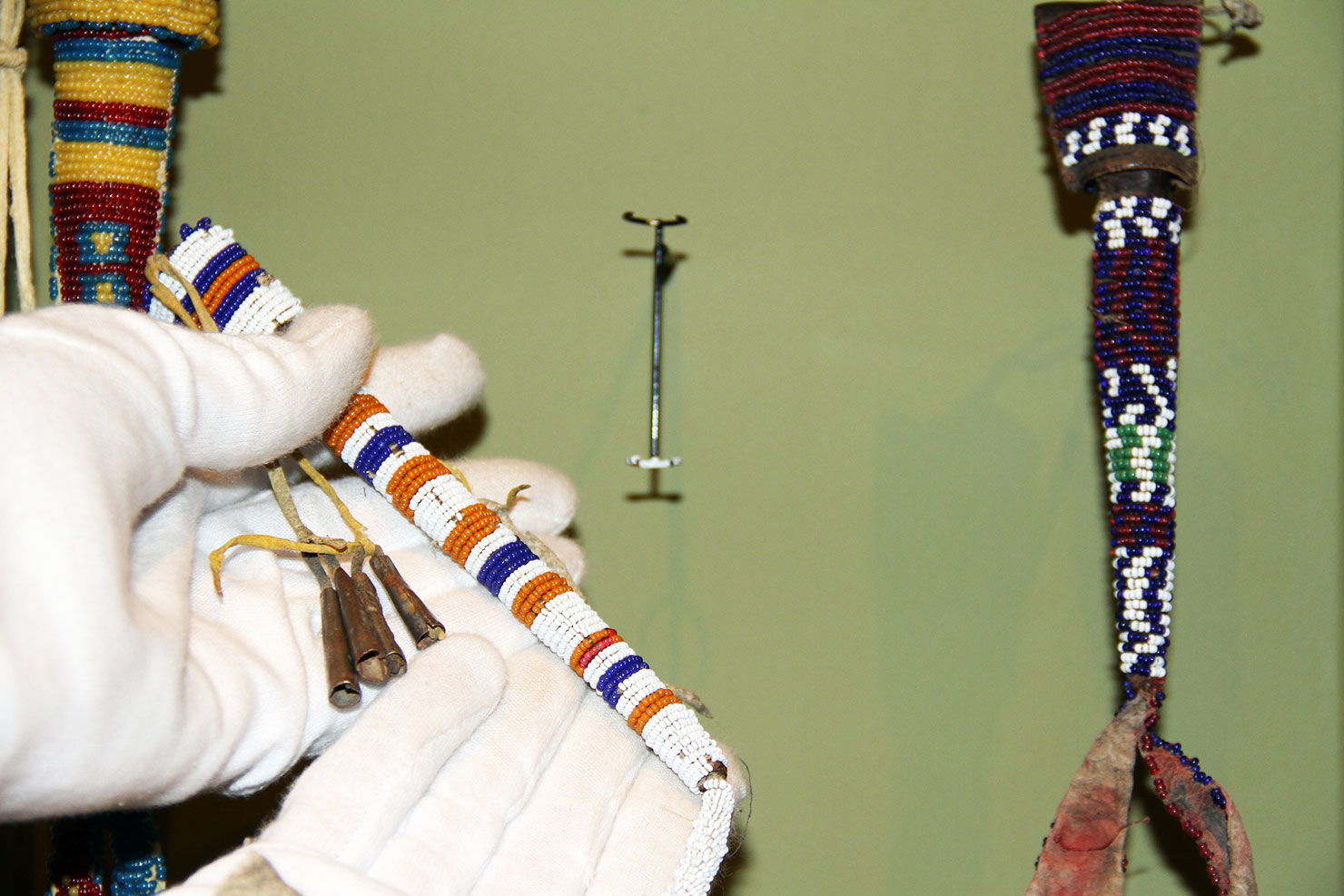The Permanent Gallery cases have been cleaned and vacuumed inside, outside and underneath. Photographs have been taken of each empty case to record the location of display mounts, interior boxes, platforms, and labels. Now the installation, or placement of artifacts, begins one at a time.
The first full case to be installed included a headdress and two pamphlets. The thin pamphlets have long titles: Corporate Charter of the Southern Ute Tribe, Colorado, Ratified November 1, 1938, and Constitution and By-Laws of the Southern Ute Tribe of the Southern Ute Reservation, Colorado, Approved November 4, 1936. The pamphlets were an easy installation, similar to putting a book on a shelf, facing forward. The headdress required a more involved process of thinking – thinking in 3-D.
Thinking in 3-D begins when an item is wheeled into the Gallery on a cart and placed next to a case. When placed next to a case, a realistic analysis between an item and a display case occurs.
The placement of the headdress began with a determination of available space inside the display case, and a determination of how much space the headdress would take up. Simultaneously, a decision had to be made on the direction of the headdress. Finally, the angle of placement, including feathers and horsehair, had to be considered along with the cloth and glass walls of the display case.
This thought process occurs while the headdress waits patiently on the cart. After discussion, two individuals place the headdress inside the display case, handling the artifact as little as possible. Final touchups are gently and slowly tended to, respectfully moving feathers and horsehair safely away from the display case walls.
Before the headdress left the Vault (collection room), the correct headdress had to be found. The headdress’s identity was verified through a recent inventory, and a previous inventory. No information was found about how the headdress was installed or de-installed. When no instructions exist regarding the installation of an artifact, a search for clues begins.
Clues to determine the direction of the headdress began with an examination of the headpiece the headdress would be placed on. The location of the mount, and the shape of the “pillow” the headdress was to sit on, provided clues on placement. A search for clues also occurred with a display of awl cases; there were a dozen mounts for three awls. The color of the metal mounts provided clues to the placement of the awls. The metal was painted to match the beaded background of the awl cases.
This installation of the headdress used for this article was donated by Mr. Floyd. No information was immediately available on who the original owner of the headdress was, how Mr. Floyd acquired it, or how long it had been with the museum. With future research, the gaps of information will hopefully be filled.
One of the installed awl cases is a replica, part of a commission to make replicas from historic items found at other museums. The history of the other two awls cases are not immediately known. Again, with future research, more information about the other two awls will surface.
As of Monday, August 14, 95 objects have been installed.

